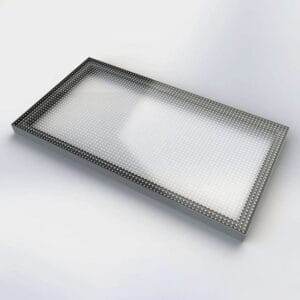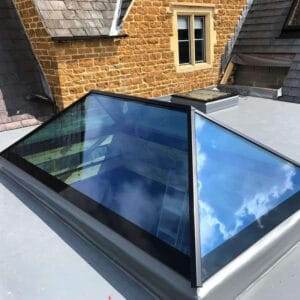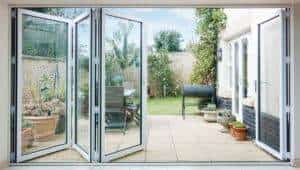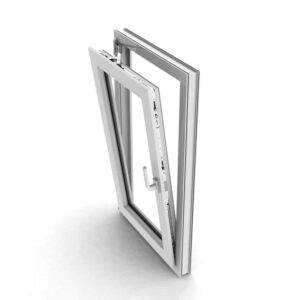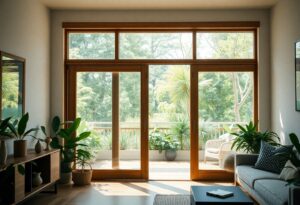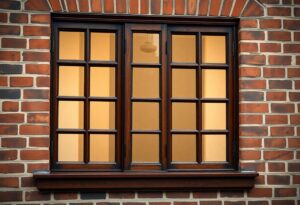Noise pollution can significantly impact your quality of life, particularly in urban environments. Noise reduction windows are becoming increasingly necessary in modern architecture, providing a solution to keep your living or working space serene. These windows not only minimise external disturbances but also enhance energy efficiency and home value. As you explore new architectural designs, understanding the role of these advanced window systems will empower you to create a more comfortable and productive environment.
Importance of Noise Reduction in Urban Environments
While city life offers numerous benefits, the incessant noise can adversely affect your well-being. Noise reduction is vital in urban areas as it creates a sanctuary from external disturbances, ensuring comfort and peace. Sound-Abatement Windows Can Help Make a House that allows you to enjoy a more serene living space, crucial to your lifestyle in bustling cities.
Impact on Mental Health
About half of adults experience stress from noise pollution, significantly impacting sleep quality and overall quality of life. Studies indicate that consistent exposure to high noise levels can lead to increased anxiety and irritability, affecting your mental health. One study noted that individuals living near busy roads reported a 25% increase in sleep disturbances, illustrating the profound effects of urban noise on your mental well-being.
Enhancing Property Values
Above all, incorporating noise reduction windows can greatly increase your property’s value, particularly for prospective buyers prioritising tranquillity in urban living. Properties situated in noisy landscapes gain appeal when offering enhanced sound insulation, making them more favourable investments. (Strategically upgrading your home to include such features could result in a significant return on investment.)
Consequently, investing in noise reduction windows not only elevates the comfort of your living space but also enhances your property’s marketability. Buyers are often willing to pay a premium for a home that promises peace and quiet, ensuring stability in property values amidst a fast-paced environment. (Consider aligning your renovation choices with buyer preferences to maximise your investment’s potential.)
Technology Behind Noise Reduction Windows
Assuming you are aware of the impact of noise on your living environment, the technology behind noise reduction windows has significantly evolved. These windows implement advanced materials and design techniques to effectively minimise sound transmission. The key to their performance lies in a combination of acoustic glass, strategically engineered frames, and meticulous installation practices, all working cohesively to dampen external noise and enhance your comfort.
Acoustic Glass Properties
Against traditional glass, acoustic glass incorporates properties that greatly enhance sound insulation. Its increased thickness, combined with laminated layers and gas fills, forms an effective barrier against sound waves. Recent advancements, such as optimised layer configurations and the use of specialised interlayers, have further improved acoustic performance. (Choosing the right type of acoustic glass is key to achieving optimal sound reduction.)
Frame and Installation Techniques
To achieve maximum noise reduction, you should also consider the window frame design and installation methods. An effectively designed frame can minimise sound leakage, while proper installation techniques ensure that windows fit snugly. The use of quality seals and efficient insulation materials are paramount in preventing sound transmission. (Investing in professional installation can significantly enhance your window’s performance in noise reduction.)
Also, prioritising strong, durable materials for your frames will further benefit the sound insulation properties of your noise reduction windows. Each component plays a vital role in reducing unwanted noise, and ensuring that all elements are up to standard is vital. (Every detail matters when it comes to achieving the best noise reduction possible.)

Architectural Integration of Noise Reduction Windows
Some modern architects are increasingly recognising the importance of integrating noise reduction windows into their designs to enhance both functionality and aesthetic appeal. These windows can be seamlessly incorporated into various architectural styles, from contemporary to traditional, ensuring that the visual integrity of the structure is maintained. (Selecting the right materials and framing can greatly influence this integration.)
Design Aesthetics
To achieve a harmonious balance between noise reduction and visual design, you must ensure that these windows complement the overall aesthetic of your building. The use of various finishes, frame styles, and glazing options enables you to match them with existing architectural elements without compromising on style. (The choice of profile designs plays a significant role in this consideration.)
Case Studies
Windows can provide undeniable benefits in sound management, as evidenced by several modern buildings that have effectively utilised noise reduction windows. These case studies reveal design intentions focused on balancing aesthetics with acoustics, leading to enhanced living spaces. (Determining the right specifications for each project is necessary to achieving optimal results.)
- One57, New York: Utilises triple-glazed windows to achieve a STC rating of 50, ensuring silence amidst city noise.
- The Shard, London: Incorporates advanced glazing technology, yielding a noise reduction of up to 18 dB.
- Sydney Opera House: Features enhanced soundproofing in windows, ensuring optimal acoustic conditions during performances.
- Wembley Stadium, London: Uses robust noise reduction glazing to limit external sound interference, achieving a decibel reduction of 30 dB.
- VIA 57 West, New York: Combines aesthetic design with acoustic optimisation, achieving a STC rating of 42.
Even with the importance of visual appeal, the performance of noise reduction windows cannot be overlooked. Your choice should prioritise functionality while ensuring that the style of your building shines through. The incorporation of high-performance glazing can lead to a significant decrease in noise pollution, greatly enhancing your environment. (Investing in the right technology will yield long-term benefits for your occupants.)
Regulatory Standards and Certifications
Despite the advancements in modern architecture, noise reduction windows are subject to a range of regulatory standards and certifications. These regulations ensure that the products meet specific performance criteria, offering you peace of mind in knowing that your choices contribute to a quieter environment. Adhering to these standards not only benefits your project in terms of quality but may also influence the overall sustainability of your building, leading to a better living or working experience.
Noise Reduction Ratings
One of the key aspects of choosing noise reduction windows is the noise reduction rating (NRR) system. Various rating systems exist, such as the Sound Transmission Class (STC) and Outdoor-Indoor Transmission Class (OITC), which quantify a window’s ability to block sound. These ratings guide you in making informed decisions based on the specific noise challenges of your environment, ensuring that both consumers and builders select the most appropriate products for their projects.
Building Codes Compliance
One important factor to consider is how compliance with building codes regarding noise reduction affects your construction or renovation projects. Local regulations often dictate the standards for noise reduction, impacting your choice of materials and designs. By aligning your project with these codes, you not only avoid potential legal ramifications but also enhance the overall quality of your build.
To achieve successful compliance with building codes, it is vital that you conduct comprehensive research on local noise mitigation standards. Non-compliance can lead to delays and costly penalties, negatively affecting project timelines and budgets. By prioritising these standards, you protect your investment while also ensuring a comfortable living or working environment for occupants. Understanding and adhering to these guidelines is beneficial for both durability and health aspects of your building project.
Market Trends and Consumer Preferences
Now, as urban living becomes increasingly prevalent, your awareness of noise pollution is heightening. You’re likely exploring What Are Soundproof Windows & How Do They Work?, driven by the need for peace within your home. This growing trend illustrates a shift towards prioritising comfort through effective noise reduction solutions, as consumers seek architectural designs that reflect their lifestyle choices.
Increasing Demand for Soundproofing Solutions
Soundproofing has become more than a luxury; it’s a necessity for many. With rising awareness of environmental issues and the challenges of urban living, you are likely finding that noise reduction windows play a significant role in maintaining your well-being. The demand for such solutions is increasing, reflecting your desire for serene living spaces amidst the chaos of city life.
Innovations in Window Manufacturing
Any recent advancements in manufacturing and design have made noise reduction windows more efficient and aesthetically pleasing. Cutting-edge technology now allows for better insulation properties and slimmer frames, enhancing your view and comfort. These innovations not only improve your quality of life but also reflect a commitment to sustainable architecture (investing in noise reduction windows can significantly enhance your property value).
Market trends show you can expect even more breakthroughs in window technology aimed at noise reduction. Continuous research and development are driving the creation of new materials and designs that effectively mitigate sound while enhancing the overall look of your home (consulting with a reputable supplier will provide you with the most effective solutions tailored to your needs).
Final Words
Taking this into account, noise reduction windows play a vital role in modern architecture, enhancing your living and working environments. By effectively minimising external noise pollution, these windows contribute to improved comfort and concentration, thereby enhancing your overall quality of life. As urban areas continue to grow and the demand for peaceful indoor spaces increases, investing in noise reduction window technology becomes a sensible choice for both residential and commercial buildings, ensuring that you can enjoy tranquillity amidst the hustle and bustle of daily life.
FAQ
Q: What are noise reduction windows?
A: Noise reduction windows are specially designed to minimise outside sound infiltration into a building. They typically feature double or triple glazing, enhanced frames, and soundproofing seals that work together to create a barrier against noise, improving indoor acoustics and comfort.
Q: How do noise reduction windows improve living conditions?
A: By significantly reducing the levels of unwanted noise from traffic, construction, or other external sources, these windows contribute to a more peaceful indoor environment. This enhancement can lead to better sleep quality, improved concentration, and overall well-being for residents.
Q: Are there specific materials used in noise reduction windows?
A: Yes, noise reduction windows often use laminated glass, which consists of two sheets of glass with a layer of polyvinyl butyral (PVB) in between. This interlayer absorbs sound vibrations, making the glass more effective at blocking noise compared to standard window panes.
Q: What factors should be considered when choosing noise reduction windows?
A: Factors to consider include the Window Energy Rating (WER), the thickness of the glass, the quality of the seals, and the overall design of the window frame. Additionally, placement and orientation can influence performance, so it is crucial to consult with professionals for tailored advice.
Q: Can noise reduction windows help with energy efficiency?
A: Yes, in addition to noise reduction, these windows can enhance energy efficiency. The insulation properties of double or triple glazing help to retain heat within the building, reducing reliance on heating systems and lowering energy bills, thus contributing to sustainable architecture.
Q: Are noise reduction windows suitable for all types of buildings?
A: Absolutely, noise reduction windows can be integrated into various building types, including residential homes, commercial properties, and high-rise apartments. They are particularly beneficial in urban settings, where noise pollution is a significant concern.
Q: What role do noise reduction windows play in modern architectural design?
A: In contemporary architecture, noise reduction windows are increasingly valued for their aesthetic versatility and functionality. They allow architects to design with expansive glass surfaces while ensuring occupant comfort and privacy, thereby contributing to the overall livability of modern spaces.

